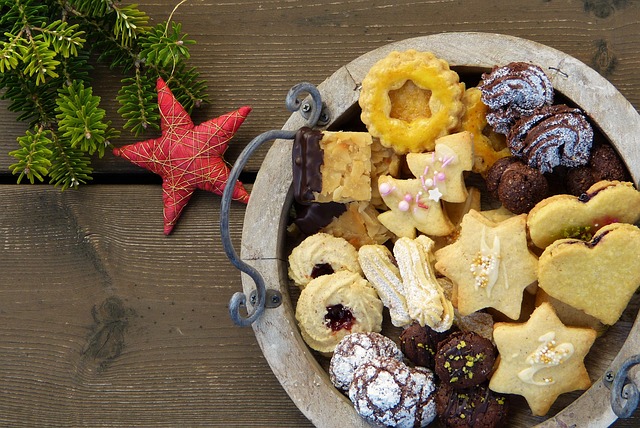Why Baking Is More Than Just Following a Recipe
Baking looks simple—mix, pour, heat—but underneath the surface, it’s a tightly controlled chemical process. Every ingredient serves a function. Every step triggers a reaction. Skip a detail or ignore a technique, and your cake falls flat—literally. That’s what makes baking different from general cooking. You can freestyle your way through a stir-fry. Baking doesn’t afford that kind of leniency.
Understanding the basics—how gluten forms, what leavening agents do, why exact temperature matters—is what separates a good baker from a lucky one. Precision isn’t just preferred, it’s survival. And once you have the fundamentals down, your results become repeatable. No guesswork. No hoping the cookies don’t spread too much this time.
That’s also why even seasoned bakers loop back to the principles. A recipe might change, but the core science doesn’t. Whether you’re mastering sourdough or trying a new pastry, it all begins with the same laws of chemistry, executed with skill. The best bakers aren’t just measuring—they’re thinking. Every gram, every minute, every fold counts.
Flour is the backbone of most baked goods. It brings structure, thanks to proteins that form gluten when mixed with water. Gluten creates a stretchy, elastic network that traps air and expands under heat. That’s why bread flour (high gluten) gives you that chewy bite, while cake flour (lower gluten) keeps things soft and tender. All-purpose flour sits in the middle—and it’s named that for a reason. Swapping one for another? Expect texture to shift.
Sugar does more than sweeten. It holds moisture, feeds browning through caramelization and the Maillard reaction, and even weakens gluten bonds—for a softer crumb. White sugar gives you crisp edges and golden color; brown sugar adds acid and molasses for chew and deeper flavor. Change the sugar, and you change more than just taste.
Fat—whether it’s butter, oil, or even lard—adds richness and tenderness. Fats coat flour particles, slowing gluten formation and giving baked goods that melt-in-the-mouth feel. Butter also brings water (which turns to steam for lift) and flavor. Oil, being 100% fat, makes cakes moist and stays soft even when chilled. Use the right fat for the right job.
Eggs work double duty. The whites provide structure through proteins that solidify and trap air; the yolks bring fat, emulsify mixtures, and add richness. Eggs also give color and help bind ingredients. A single egg can do a lot—leave it out or substitute it, and you need to compensate carefully.
Leaveners are what make baked goods rise. Baking soda is pure alkaline and requires acid (think buttermilk, yogurt) to activate. Baking powder has both acid and base, so it works in neutral environments. It often acts twice—once when wet, again when heated. Yeast, on the other hand, is alive. It feeds on sugar, produces gas over time, and adds that distinct fermented flavor. Use soda or powder when you want speed. Use yeast when time and flavor matter.
Get these five ingredients right, and you’ve got a foundation stronger than most recipes.
Temperature: The Invisible Force in Every Bake
Temperature doesn’t just influence baking—it decides the outcome. Start with ingredients. Room-temperature butter blends smoothly with sugar, creating tiny air pockets that give cakes structure and lightness. Cold butter, on the other hand, resists mixing. Great if you’re making pie dough and want flakiness. Not so great for a sponge cake that’s supposed to rise.
Eggs, milk, and even flour benefit from a little warming up too. Cold ingredients can cause batter to seize or curdle, throwing off texture. Bringing things to room temp isn’t just tradition—it’s science.
Then there’s your oven. Preheating isn’t a suggestion. Most ovens take more time than you think to reach the set temp, and many don’t hold it consistently. That initial burst of heat (or lack of it) affects rise, crust, and doneness. Invest in an oven thermometer. The dial lies more often than not.
Finally, baking is a series of chemical reactions triggered by heat. Caramelization starts around 320°F, where sugars break down and deepen in flavor. The Maillard reaction begins near 300°F, giving bread its golden crust and cookies their toasted notes. Miss the mark, and your flavors flatline.
Temperature: quiet, often invisible, but always in control.
Measurement Matters: Weight vs. Volume
Let’s cut to it—measuring flour with cups is a gamble. A packed cup of flour can weigh 30% more than a properly fluffed one. Scoop too hard, and you’re turning your delicate bake into a dense brick. It’s not just flour, either. Brown sugar, oats, cocoa powder—they all lie to you in cup form. Volume just isn’t consistent in the real world.
Enter the kitchen scale. It removes guesswork. Grams don’t shift with humidity or how hard you tapped the bag. Professional bakers use scales for a reason: precision equals consistency. You nail the ratios once, then repeat that perfect bake every time. Simple as that.
Don’t have a scale? Try this: spoon ingredients into the cup, don’t scoop directly. Use the back of a knife to level. It’s not perfect, but it’s way better than the alternative. And if you bake more than twice a month? Just get the scale. It’s cheap. It’s fast. And it makes you instantly better.
Mixing Techniques and Gluten Development
Mixing might seem basic—just stir until it looks good, right? Not quite. What you’re really doing is managing gluten, a network of proteins (mainly glutenin and gliadin) that form when flour meets water. Mix too little, and the structure won’t develop; your bake collapses or crumbles. Go too hard for too long, and the dough tightens up, turning chewy into tough.
Kneading is controlled mixing. Its job? Stretch and align gluten strands so your dough has strength and elasticity. Folding is gentler—useful mid-rise to build layers without losing gas. Resting (sometimes called autolyse) lets enzymes relax the dough and develop flavor, all while gluten does its thing passively. It’s not just about structure—it’s about timing it right.
Here’s the trick: gluten is your friend when you need a rise and a bite—like in sourdough or bagels. It’s your enemy when you want soft, tender textures—think cakes or muffins. The secret’s in how (and how much) you mix. So slow down. Feel the dough. And trust the process—you’re not just mixing, you’re building (or softening) the backbone of your bake.
Baking Reactions in Action
Let’s strip it down. Flavor and color in baking don’t just appear—they’re the result of serious chemical reactions. The two heavy hitters here: the Maillard reaction and caramelization.
Caramelization is sugar doing its thing under high heat. It starts breaking down at around 320°F, turning golden, then deep amber, and finally dark brown if you push it. It adds that nutty, bittersweet complexity to baked goods like tarts, crusty breads, and buttery cookies.
The Maillard reaction is a bit more layered. It’s not just sugar—it’s sugar meeting protein under heat, starting around 285°F. This is the magic behind browned bread crusts and golden pie tops. It leans savory, even in sweet bakes, adding toasty, umami edges that make flavors richer and deeper.
Then there’s steam. Out of place? Not at all. In artisan loaves and other baked goods, hitting the oven with steam early on keeps crusts elastic, allowing for better rise. Once the heat pushes moisture out, that same crust dries and crisps perfectly. No steam? You risk hard shells and split sides.
And yes—baking, at its core, is controlled dehydration. You’re driving moisture out at just the right pace. Too fast, and things scorch or crack. Too slow, and you’re left with damp centers or a soggy base. The timing, the temperature, the structure—it all comes down to managing water loss for texture and lifespan.
Understanding these reactions doesn’t mean getting fancy—it means getting it right more often. And that’s the kind of control every serious baker wants.
Common Mistakes (and the Science Behind Them)
Flat cookies, sunken cakes, dry muffins—these aren’t just bad luck. They’re signals that something small in your process veered off course. Baking is chemistry, and even tiny missteps can throw the whole reaction off.
Take flat cookies. Maybe your butter was too warm when you started, or you skipped chilling the dough. Either way, fat melts too quickly and spreads before structure sets. For sunken cakes, it’s usually a leavener issue—too much, too little, or an old box that’s lost its punch. Or you opened the oven door too soon, released the heat, and collapsed all that rising air.
With muffins, dry texture points to overbaking or overmixing. Too much stirring develops excess gluten, toughening the crumb. And minutes too long in the oven pulls away needed moisture.
The good news? These are all fixable. Use an oven thermometer so you’re not just trusting the dial. Weigh ingredients—especially flour—since volume is wildly inconsistent. And read your recipe all the way through before starting—most beginner mistakes happen before you even crack an egg.
Take It Further
Baking doesn’t exist in a vacuum—it’s part of a broader culinary science where heat, time, and balance shape the final outcome. Once you understand how these core principles work in baking, you can begin to apply them to nearly any cooking method with more confidence and control.
The Trio of Baking Power
To level up your skills, focus on mastering these three interconnected forces:
- Heat: Drives the chemical reactions—like rising, browning, crisping—and has a direct impact on texture and flavor.
- Time: Determines everything from moisture levels to doneness. Too short or too long, and the whole bake changes.
- Balance: How ingredients interact. The right ratios of fat, flour, eggs, and leavener produce the structural and flavor results you want.
Understanding these allows you to troubleshoot and tweak recipes intentionally. It’s the difference between hoping something turns out and knowing exactly why it will.
Applying the Same Lens to Other Cooking Techniques
Once you’ve developed a feel for this balance in baking, you’ll notice patterns emerge across other cooking styles too. Whether you’re grilling a steak or roasting vegetables, the same core forces—heat, time, and balance—apply.
Start experimenting with:
- Grilling: Focus on the direct impact of flame and sear. Timing and surface moisture play critical roles. Learn more with our guide to grilling like a pro.
- Sautéing: How pan temperature influences browning and texture.
- Slow cooking: Time transforms texture and concentrates flavor, just like a long bake.
Once you grasp the science, your kitchen becomes a place of experimentation—where technique, not recipes, lead the way.
Final Thought
Baking stops being random once you understand the science. The moment you grasp what eggs actually do or how gluten forms, your kitchen becomes less of a gamble and more of a lab—one you can trust. It’s not just about making things that taste good. It’s about being able to do it again tomorrow, next week, any time you want.
And here’s the kicker: once you know the rules, you get to bend them. Swap sugars. Reverse the fat ratio. Push the boundaries on temp or technique. You’re not guessing—you’re experimenting with purpose. That’s the shift. From hobbyist to confident baker. From following recipes to writing your own.
Don’t just bake—understand what makes it work. Then do it your way.

 Kennethony McKenna played a vital role in helping build Food Smart Base, contributing his expertise and dedication to the project’s development. His efforts supported the platform’s growth into a reliable source of food news, nutritional advice, and culinary insights, ensuring that it serves readers with both accuracy and value.
Kennethony McKenna played a vital role in helping build Food Smart Base, contributing his expertise and dedication to the project’s development. His efforts supported the platform’s growth into a reliable source of food news, nutritional advice, and culinary insights, ensuring that it serves readers with both accuracy and value.